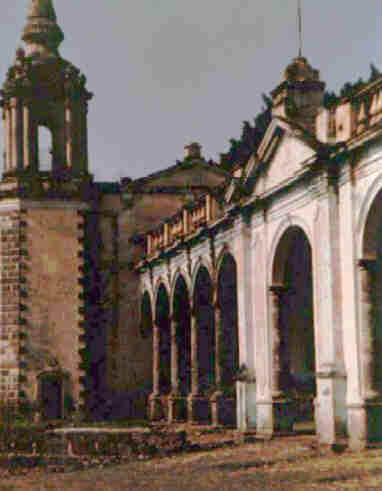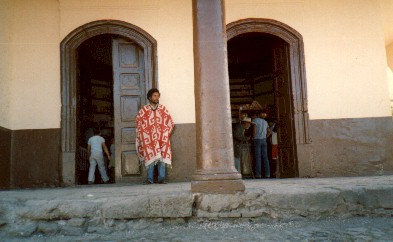 The Great
House of the Hacienda of Guaracha in 1982, before its conversion into a new
preparatoria school
The Great
House of the Hacienda of Guaracha in 1982, before its conversion into a new
preparatoria school The Great
House of the Hacienda of Guaracha in 1982, before its conversion into a new
preparatoria school
The Great
House of the Hacienda of Guaracha in 1982, before its conversion into a new
preparatoria school
The old colonial road which passed along the southern edge of the Ciénega linked the area to the town of Zamora to the East, and beyond that to the state capital, Morelia, and Mexico City. To the north-west, the road passed through the two towns, Jiquilpan and Sahuayo, across the state boundary through La Barca and Ocotlán, and on to the capital city of Jalisco, Guadalajara. But it was the establishment of a steam-boat service across the lake and the construction of rail links to Mexico City at the end of the 19th century which did most to facilitate realization of the area’s commercial agricultural potential, before a paved road suitable for heavy trucks was constructed as part of a series of transformations brought to the region by the post-revolutionary state in the second half of the 1930s. Prior to the modernization of its transport infrastructure, the produce of the Ciénega, which included sugar, was packed by mule-trains. The muleteers operated over great distances and difficult terrain, articulating the plain to the haciendas of the Tierra Caliente zone to the South, via routes which differed substantially from the modern road network. It was not, however, simply physical geography which had shaped the economic structure of the region and its articulation to the larger world at the time of the Revolution.
The principle social fact of the western part of the Ciénega in 1910, and for some time afterwards, was the gigantic landed estate known as Guaracha. Owned at this stage by a wealthy Guadalajara banking family with the best of marital and political connections within the Porfirian macro-regional and national elite, Guaracha was the centre of a local power network which embraced a number of smaller estates in the north-eastern corner of the Ciénega and in the Vaso de la Laguna area beyond the hills to the South. The smaller landowning families resident in the town of Jiquilpan also lived in the shadow of Guaracha. These families provided the estate with some of its administrators, but there was a substantial social gap between them and the absentee masters of Guaracha. Differences in the class positions of different strata of the regional elite were complemented by variations in the class relations and systems of labour exploitation which characterized different agrarian enterprises in the wider region of western Michoacán. Guaracha itself was, however, in many respects quite close to the stereotypic picture of the Porfirian hacienda painted by the "Black Legend" of agrarian revolutionary ideologues, although the exploitatation which it inflicted on its peons and sharecroppers was driven by a capitalist rather than feudal rationality.
Renovated interior of the Great House,
1995l
(Below) The ruined sugar mill of the Guaracha hacienda, built during the Porfiriato and turned into a peasant cooperative under President Cárdenas


(Above) The former tienda de raya of Guaracha's subaltern hacienda in the village of San Antonio Guaracha